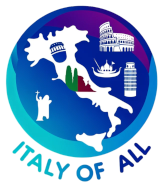The province of Gorizia, located in the Friuli Venezia Giulia region of northeastern Italy, is a unique area rich in history and cultural diversity, situated at the crossroads of Latin, Slavic, and Germanic influences. Its strategic position along the border with Slovenia makes Gorizia a melting pot of cultures, languages, and traditions, enhancing its distinct identity within Italy.
Geographically, Gorizia is bordered by the Isonzo (Soča) River, which has historically been significant both as a physical boundary and as a focal point during the battles of World War I. The province features a mix of landscapes, including the fertile plains of the Isonzo valley, vineyard-covered hills, and parts of the Julian Alps. This diverse terrain supports both agricultural and recreational activities, offering residents and visitors a variety of outdoor experiences.
Historically, Gorizia has been a contested territory, with its control passing between various states and empires. It was part of the Austrian Habsburg Empire until the end of World War I, when it became part of Italy under the Treaty of Versailles. The city of Gorizia itself is known as the “City of Peace,” notable for its role in 20th-century conflicts and subsequent efforts to promote cross-border cooperation and reconciliation.
Culturally, Gorizia reflects a rich blend of influences. This is visible in its architecture, with Austro-Hungarian style buildings alongside typical Italian structures. The province is known for its vibrant festivals, such as the Gusti di Frontiera, which celebrates international cuisines and cultures, showcasing its multicultural heritage. Gorizia also boasts a strong tradition in music and arts, supported by various cultural institutions and events that foster an inclusive community spirit.
Cuisine in Gorizia is similarly diverse, blending Italian, Slovenian, and Austro-Hungarian culinary traditions. Typical dishes might include goulash, a reflection of its Central European influence, alongside traditional Italian pastas and seafood from the Adriatic. The province is also known for its wine production, particularly white wines like Pinot Grigio and Sauvignon, which thrive in the local climate.
Economically, Gorizia’s economy has traditionally been based on agriculture, particularly vineyards and fruit orchards. However, in recent decades, there has been a shift towards industry and services, including logistics and cross-border trade, which benefit from its strategic location. Tourism is also a growing sector, driven by the area’s historical sites, natural beauty, and cultural festivals.
Despite challenges such as economic integration with its bordering nations and the need to revitalize some of its industrial sectors, Gorizia is actively working towards sustainable development. This includes promoting cultural tourism, enhancing local production, and fostering cross-border cooperation to create a more dynamic and interconnected region.
Overall, the province of Gorizia offers a compelling mix of historical depth, cultural diversity, and scenic landscapes. Its ongoing efforts to bridge cultures and promote sustainable growth ensure its continued significance in Italy’s cultural and economic landscape, making it a unique and enriching place to explore.
Comuni in Gorizia Province:
- Capriva del Friuli
- Farra d’Isonzo
- Cormòns
- Dolegna del Collio
- Doberdò del Lago
- Fogliano Redipuglia
- Gorizia
- Gradisca d’Isonzo
- Mariano del Friuli
- Monfalcone
- Sagrado
- Romans d’Isonzo
- Ronchi dei Legionari
- San Canzian d’Isonzo
- Savogna d’Isonzo
- San Floriano del Collio
- Staranzano
- San Lorenzo Isontino
- San Pier d’Isonzo
- Villesse
